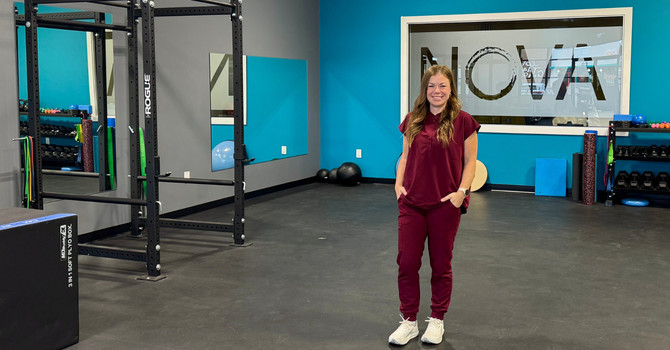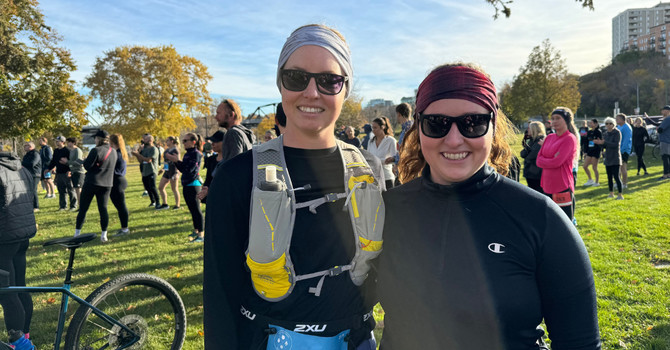
Understanding Dry Needling and Its Benefits
Dry needling is a technique used by Kara to treat pain and muscle tightness. If you’ve heard of this term but aren’t sure what it involves or how it works, you’re not alone! Dry needling is an effective method to relieve muscle pain, improve flexibility, and promote healing. This blog will help explain the basics of dry needling, how it works, and why it may be a valuable addition to your physical therapy plan. At Nova Physiotherapy in Warman, Kara uses dry needling as part of her holistic approach to treating musculoskeletal issues.
What is Dry Needling?
Dry needling is a technique used by Kara to alleviate myofascial trigger points, which are tight knots of muscle that cause pain and discomfort. It involves inserting a thin, sterile needle into specific muscle areas. Unlike acupuncture, which is based on traditional Chinese medicine, dry needling focuses on the physical properties of the muscles and tissues.
The needle is inserted into the muscle to stimulate a response that helps relieve pain, reduce muscle tension, and promote healing. The term "dry" refers to the fact that no medication or fluid is injected into the body during the process.
How It Works
When a trigger point is identified in the muscle, it can cause pain, stiffness, and reduced mobility. Dry needling targets these points by inserting a needle directly into the muscle.
Here’s how dry needling works:
- Inserting the Needle: The needle is placed into the myofascial trigger point.
- Muscle Response: The needle insertion causes the muscle to twitch or contract, which is a normal reaction.
- Pain Reduction: This twitch response helps reset the muscle, reduces muscle tightness, and alleviates pain.
- Improved Blood Flow: Dry needling also helps increase blood flow to the affected area, which promotes healing and reduces inflammation.
This process can break the cycle of muscle tension and pain, providing lasting relief to patients dealing with myofascial pain syndrome and other musculoskeletal conditions.
Benefits of Dry Needling
Dry needling is a powerful tool in physical therapy, offering a variety of benefits for individuals experiencing muscle pain or tightness. Below are the primary advantages of incorporating dry needling into your rehabilitation or pain management plan:
1. Pain Relief
Dry needling helps alleviate pain by targeting trigger points that cause discomfort. Whether you're dealing with chronic pain or recovering from an injury, the technique may provide significant relief.
2. Increased Range of Motion
By reducing muscle tightness, dry needling can help restore your full range of motion. This is especially beneficial for athletes or individuals recovering from an injury, as it enables them to move more freely and engage in physical activities with less pain.
3. Improved Muscle Function
Dry needling can improve muscle function by releasing muscle knots and improving circulation in the affected area. This leads to better muscle performance and reduces the likelihood of muscle fatigue or overuse.
4. Treatment for Myofascial Pain Syndrome
Myofascial pain syndrome occurs when myofascial trigger points cause pain and discomfort in the muscles. Dry needling is a highly effective treatment for managing this condition, as it directly targets the trigger points and reduces their activity.
5. Sports Recovery and Rehabilitation
For athletes, dry needling can accelerate recovery by reducing muscle tightness and improving the healing process. It is often used in physical therapy to treat conditions like tennis elbow, runner's knee, shoulder pain and ankle pain.
How Does Dry Needling Relieve Pain?
Understanding how dry needling works to alleviate pain requires an understanding of "sensitization," which is a process where the nervous system becomes more sensitive to pain signals. In many cases, a sensitized nervous system can amplify muscle pain and discomfort, leading to chronic pain issues.
Dry needling addresses this issue by:
- Resetting the Nervous System: The twitch response caused by the needle helps reset the sensory feedback loop in the nervous system, reducing pain signals.
- Breaking the Pain-Spasm Cycle: Trigger points often cause a cycle of pain and muscle contraction (spasm), which perpetuates discomfort. Dry needling helps break this cycle by releasing tension in the muscles.
- Improving Blood Flow: As mentioned earlier, dry needling promotes blood circulation to the affected muscles, which helps reduce inflammation and speeds up the healing process.
This process allows the body to recover more efficiently and may improve your ability to move without pain. When you are able to have less pain with movement, you can then increase your activity levels which helps to maintain the benefits of dry needling long term. Pain inhibits strength. Therefore, a pain free body is able to perform better both in daily and sporting activities.
Is Dry Needling Safe?
When performed by a trained and licensed physiotherapist, dry needling is considered a safe and effective treatment. The needles used are very thin, much smaller than those used for injections, and sterile to minimize the risk of infection.
However, as with any treatment, there are a few potential risks or side effects to be aware of:
- Soreness: After a dry needling session, some patients may experience mild soreness in the treated area. This is usually temporary and should subside within 24-48 hours.
- Bruising: Occasionally, small bruises may develop at the needle insertion sites, but these are typically minor and fade quickly.
- Rare Side Effects: In very rare cases, dry needling can lead to dizziness, fatigue, or injury if performed incorrectly, which is why it is important to seek treatment from a trained professional.
At Nova Physiotherapy, Kara is highly skilled in performing dry needling and ensuring that it is done safely to achieve the best results for your recovery. She will discuss dry needling with you and you will be able to ask any questions before your treatment. Dry needling is used in conjunction with other physical therapy techniques such as stretching, joint mobilizations, nerve glides and strength exercises. At each session, you will have the opportunity to ask any questions and decide whether to include dry needling in your physical therapy session. Dry needling is covered by your physiotherapy health insurance benefits.
What Conditions Can Dry Needling Treat?
Dry needling is a versatile treatment option that can be used to treat a variety of conditions. Some of the most common conditions that benefit from dry needling include:
- Myofascial Pain Syndrome: Characterized by trigger points that cause muscle pain and tenderness.
- Chronic Muscle Pain: Dry needling helps reduce ongoing muscle pain by targeting specific problem areas.
- Tendonitis and Tendinopathy: Conditions like tennis elbow, Achilles tendinopathy, and rotator cuff tendonitis can benefit from dry needling.
- Muscle Spasms and Tightness: Dry needling is effective for releasing muscle spasms and tightness in the face, neck, back, shoulders, and legs.
- Sports Injuries: Athletes recovering from sports injuries such as sprains, strains, or overuse injuries can benefit from dry needling to speed up recovery and reduce pain.
You may begin to notice an improvement in the muscle after the first session but will often need several sessions to regain full function in the affected area. Dry needling is most effective when paired with corrective exercises which Kara can teach you in your session.
Is Dry Needling Right for You?
If you are experiencing chronic pain, muscle stiffness, or discomfort from a musculoskeletal injury, dry needling may be an effective solution. It is especially useful for people with myofascial pain syndrome, those recovering from sports injuries, or anyone struggling with persistent muscle tightness.
If you're considering dry needling as part of your treatment plan, it's important to consult with a licensed physiotherapist who can assess your condition and determine whether dry needling is appropriate for you.
You should avoid dry needling if you have an infection, are pregnant, or are afraid of needles.
At Nova Physiotherapy in Warman, Kara offers dry needling as part of a comprehensive treatment plan to address your specific needs. Kara will work with you to create a personalized approach to pain relief and recovery.
Conclusion
If you are seeking a solution to muscle tightness, book an appointment with Kara at Nova Physiotherapy. Dry needling is an effective and safe technique that may provide significant relief for individuals suffering from pain and muscle tension. By targeting trigger points and promoting healing, dry needling can help you regain mobility, improve muscle function, and reduce pain.
Speak with Kara today to learn more about how dry needling can help you feel better and move better! Or click HERE to book an appointment!

.jpg)


